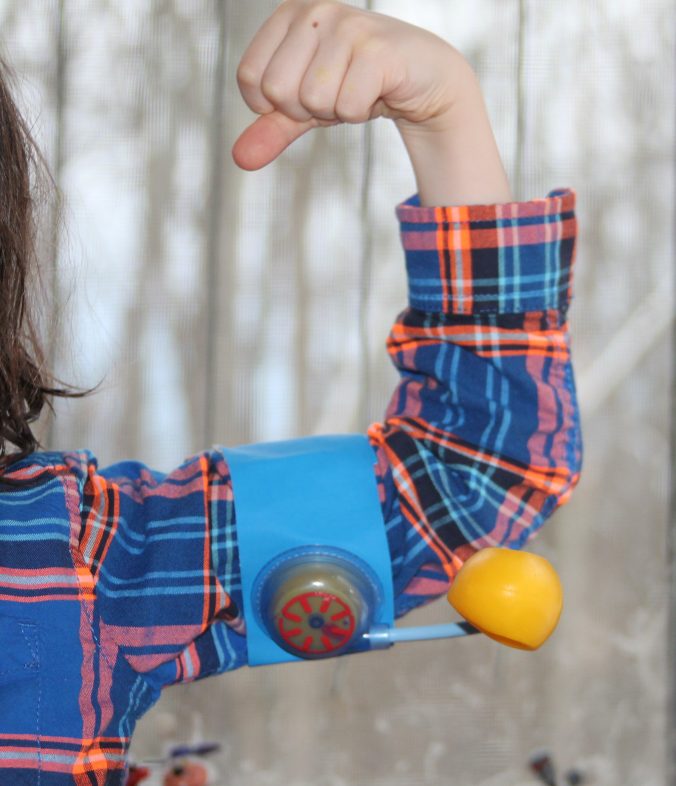A family brings their six year old for a vaccine. When it’s time for the shot, the little boy panics. He says “no, I’m not going to!” then cries and runs away. His mother catches him, but he thrashes as she brings him back. Is this one of my pediatric patients? No. This was my son last year. This year, however, things went differently. He was still nervous, but there was no screaming, no running. He was even able to say “Okay, I’m ready” when the time came. How? Prep, patience and simple strategies.
For some kids and families like ours, the doctor’s office is a struggle. This can happen for a lot of reasons. Many children are afraid of needles. Some kids get sensory overload and feel overwhelmed by new feelings, sight and sounds. A child may have a past trauma or bad medical experience, and the doctor’s office triggers scary memories and feelings. Whatever the cause, there are ways to make the doctor’s a little less painful.
Prepare
The first step to easier visits starts before you get to the office. Kids feel more secure when they know what to expect. Explain to your child at their level what will happen. Does the blood pressure cuff bother them? Say the nurse will put a band on their arm that will squeeze like a hug. Is the ear exam a challenge? Tell them the doctor will shine a flashlight in their ear and it might tickle.
Should you tell kids about shots ahead of time? Most kids do better when they are not surprised and can mentally prepare. For others, knowing before just builds anxiety. You know your kid best. Use simple positive language, e.g. “You may need a vaccine to stay healthy. It is a quick pinch and helps protect you and other people from getting sick.”
(Favor for all pediatricians: please don’t promise that there won’t be shots or that shots won’t hurt. If your child needs them, they may not trust you the next time, and future visits will be harder if they expect the worst. If you decide not to tell them ahead of time, it’s better to just say “I don’t know”.)
Practice
Practice parts of the exam at home. “Pretend I’m the doctor, now I’m going to feel your tummy!” Pick a time when your child is relaxed; try to make it fun. When kids know what’s going to happen, they feel like they have some control. Plus, when they realize, “Oh, I remember this, I did this with daddy,” they have extra confidence and reassurance.
For older kids, practice what strategies they’re going to use for the more difficult parts of the exam. If kids practice a calming strategy in a safe and controlled setting, they are more likely to use when they need it.
Calming strategies
For overall anxiety about the visit, focused breathing is a good strategy to try. Even very young kids can do breathing exercises such as pretending to blow out a candle or putting their hand on their belly and feeling it move up and down. Older kids can try breathing in for 3 seconds, holding for 4 seconds and breathing out for 5 seconds.
Distraction works well for scary parts of the visit. This can be looking at a book, singing a song together, watching a video, playing a game or listening to music.
Don’t forget the power of touch. Hugging your child on your lap, holding their hand or rubbing their back can make a big difference in their anxiety. If your child is very sensitive to touch, tell the doctor this, too.
Be an advocate
Don’t be afraid to speak up. There are usually things that your doctor’s office can do to help. If there are parts of the exam that are especially challenging, maybe they can be done later in the visit after your child warms up (or they may not need to be done at all). If the texture of the gown annoys your child, can they do the exam without it? If your child wants to stay on your lap instead of the exam table, that’s probably fine.
If your child has a fear of needles, let the office know. There are creams and sprays that can lessen the pain of a vaccine. They usually need to be applied up to 30 minutes ahead of time, so ask before your visit. Tell the doctor some of the positive or soothing language you’ve been using at home so they can use the same words.
Finish on a high note
Give your child something to look forward to at the end of the visit. Maybe it’s playing a game together, having a special treat, calling a favorite relative, getting a library book or extra TV time. Whatever it is, do it no matter how the doctor’s visit goes. This is important because 1) if the beginning of the visit doesn’t go well, they still have something to look forward to during the rest of it and 2) it creates a positive feeling for the next doctor’s visit even if this one doesn’t go perfectly.
After the visit is done, try to frame the visit in a positive light and find a way to praise your child for a part they did well.
